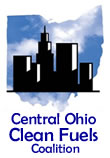


One Vehicle on the Road, Two Others in the Garage
By MATTHEW L. WALD, NEW YORK TIMES
WASHINGTON, Aug. 29 — To some drivers stuck in traffic this holiday weekend, it may look as if every car in America is on the road in front of them.
But that is no longer possible.
There are now more cars in American households than drivers, according to a report released today by the Transportation Department.
So unless the cars can drive themselves, some of them will have to be "left in the driveways," said Justin McNaull, a spokesman for AAA.
The average household now has 1.75 drivers but 1.90 "personal vehicles."
By comparison, the average household has 0.86 adult-size bicycles.
The car population has been gaining on the driver population for some time. Cars have become as specialized as shoes, experts say, with different designs for different uses.
Mr. McNaull said that households with two adult drivers may have a car for commuting to work, a second for hauling the family around and a third, "a two-seater to let mom or dad escape from the reality of the world for a couple of hours."
And there is the odd special-purpose vehicle like the Winnebago or the restored '57 Chevy (which will be on the highway this weekend only if the weather is dry).
When people, not just drivers, are counted, one-person households have an average of 1.01 cars; two-person households have 1.98 cars; three-person households have an average of 2.31 cars; and four-person households have an average of 2.39 cars.
The main use of cars is not long trips, but short ones. A 2001 survey found that 91.2 percent of people used cars to get to work, 4.9 percent used public transit, 2.8 percent walk and 1.1 percent used some other means.
According to the Transportation Department, which surveyed 26,000 households and 60,000 individuals in 2001 and 2002 and is only now releasing the results, 7.9 percent of households do not have cars, down from 8.1 percent in 1995. That is within the margin of error.
Households without cars include "a lot of people living in New York, who don't want to park on Fifth Avenue and get the tickets," said Roger Lotz, a spokesman for the Bureau of Transportation Statistics. The total also includes households that cannot afford a car or do not have a licensed driver.
People with cars will be driving them a lot, according to AAA, which is predicting that 33.4 million Americans will travel 50 miles or more from home over the Labor Day weekend, up 1.8 percent from last year, with 84 percent going by car.
The number of car travelers is up 2.2 percent, the auto club said, to 28 million. An additional 3.7 million, or 11 percent, will travel by plane, down 2.6 percent, and the rest by bus, train or other mode, up slightly from last year. The figures are based on a telephone survey of 1,300 adults.
Fuel prices are up 20 to 30 cents a gallon, Mr. McNaull said, adding that that would not make much difference for most drivers. "For that couple-of-hour drive to the beach, to the mountains, to grandma's, it's an extra $3 to $5," he said. That sum, he said, is no more than the price of "a fancy cup of coffee for mom and dad when you gas up."
Others were not so sanguine. Representative Edward J. Markey, Democrat of Massachusetts, said in a letter today to the energy secretary, Spencer Abraham, that in his 26 years on the House energy committee he had never seen such a steep increase; he urged an investigation.
Also likely to be up this weekend is the number of drunken-driving fatalities, experts said.
Year-round, alcohol is involved in about 40 percent of fatal crashes, but on Labor Day weekend in 2001, the last year for which full statistics are available, the number was more than 50 percent, said John Moulden, president of the National Commission Against Drunk Driving. Hard-core drunken drivers are responsible for a high proportion of such fatalities, but on holiday weekends they are joined by the "amateurs," he said.
Based on recent trends, including a gradually rising number of fatal accidents involving alcohol, he said, about 488 people will die this weekend in motor vehicle accidents, and 250 to 255 of those deaths will be in accidents involving alcohol, with thousands more injured.
He recommended that people attending parties pick a "designated driver," who should be sober, and not just "the least drunk." And pedestrians, who make up a large fraction of drunken-driving victims, should wear light-colored clothing and walk facing traffic, he said.
Central Ohio Clean Fuels Coalition
930 Kinnear Road • Columbus, OH 43212
Phone: (614) 292-5435 • Fax: (614) 688-4111
Copyright © 2003 Central Ohio Clean Fuels Coalition / kmaX Web Visuals
 |
||||
 |
||||
 |
||||
 |
||||
 |
||||
 |
||||
 |
||||
 |
||||